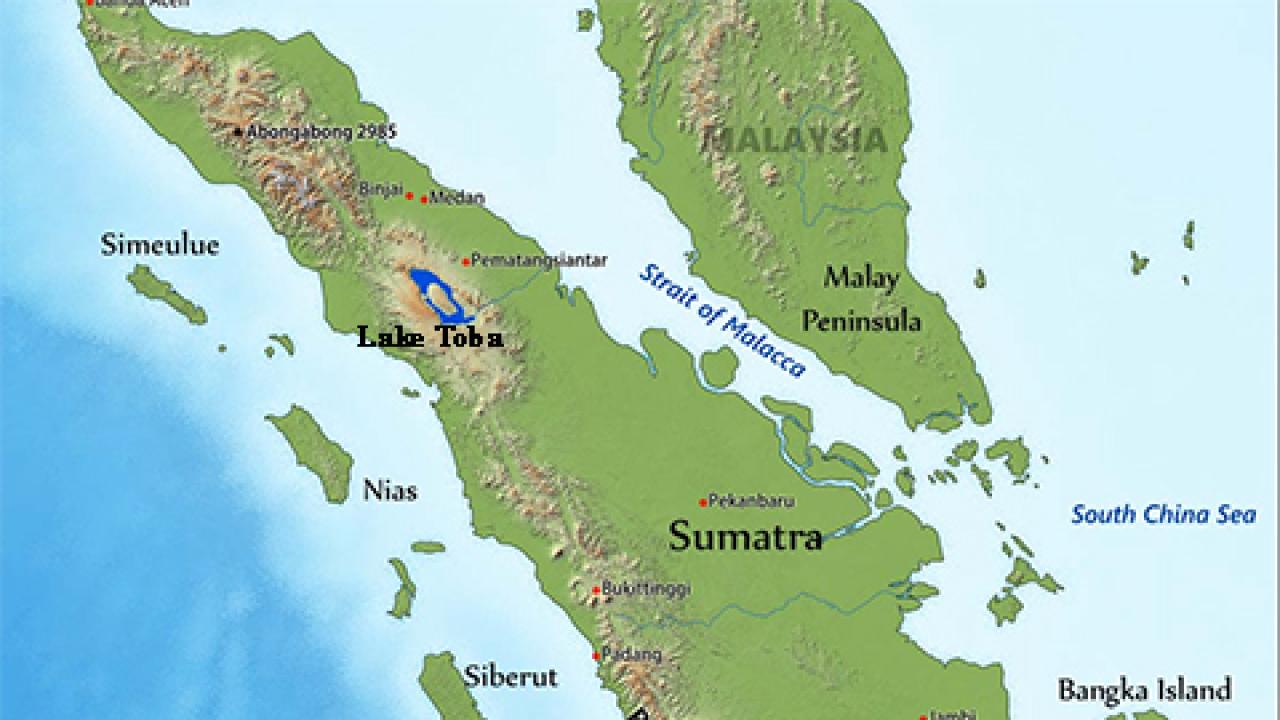
In this new web feature, ICTP highlights outreach activities by its scientists, who frequently travel throughout the developing world to share their scientific expertise. The “ICTP effect” is spread further through the Centre’s active program of training and education in support of sustainable science; more details about ICTP’s scientific outreach activities can be found here.
ICTP scientist: Karim Aoudia
Research section: Earth System Physics
Area of expertise: solid earth physics (earthquakes, volcanoes)
Recently seen in: Indonesia
Purpose: To deliver the keynote lecture at conference on ‘Lake Toba, from Hazard to Competitiveness through Science’, which was co-sponsored by Generali Indonesia. Aoudia reports, “I talked about the geodynamic aspects of Lake Toba and its hazardous nature, with implications on a better knowledge of natural hazards and a safe built environment.”
Is this the same Lake Toba where a supervolcanic eruption happened tens of thousands of years ago, nearly wiping out all of humanity? Yes, but nowadays it is the best natural laboratory in the world. Think CERN, but with a giant subduction plate, a dangerous earthquake fault, and a volcano as its ‘tools’. Says Aoudia, “Lake Toba is one of the world's most unique lakes. It sits above a gigantic caldera which is renowned for a supervolcanic eruption that took place 73,000 years ago. The lake is adjacent to one of the most hazardous earthquake faults in the world known as the Great Sumatran fault. This makes Lake Toba one of the world’s most interesting sites in terms of natural resources, lake ecosystem and island culture.”
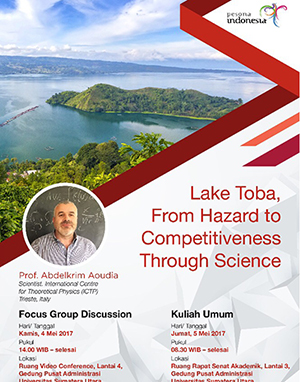 |
|
| Poster of Karim Aoudia's presentation in Indonesia | |
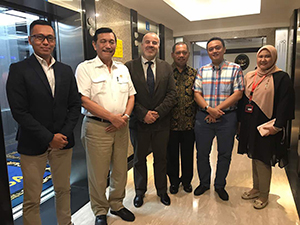 |
|
| Aoudia met with policymakers in Indonesia, including the Minister of Maritime Affairs | |
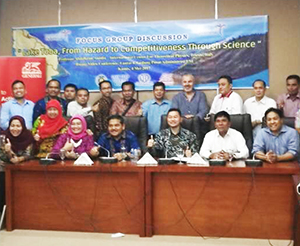 |
|
| Aoudia at a meeting with Lake Toba stakeholders | |
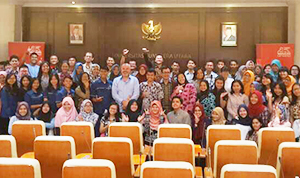 |
|
| Meeting with students at the University of North Sumatra | |
Side events:
- Meeting with Minister of Maritime Affairs (responsible for tsunamis, earthquakes and volcanic eruptions) and other policymakers: “The Lake Toba Authority, which invited me, wants to develop tourism around the lake, but before they do that they want to understand the natural hazards. Everyone kept asking me the same question: do you think this will erupt? And my answer is, we do not know, we need data sets. We have models, but our models need local data sets to determine what is going on.”
- Meeting stakeholders of the North Sumatra Province: “This meeting was about Lake Toba becoming a science and tourism hub. Policymakers want to attract tourists to the area, but before they do they first need the science. There are seven distinct cultural communities living on the shores of Lake Toba who know how to live with the environment. Developing a science and tourism infrastructure will need their support and input to be successful.”
- Teaching at local universities: “I gave lectures to students mainly coming from the last year of engineering and IT; IT students could handle the big data sets that we could collect from the lake. I talked about why Sumatra is a good natural lab and what seismology allows us to do and how it can help the region become a vibrant scientific hub, involving many scientific fields related to the lake: geophysics, seismology, volcanology, water science, chemistry, as well as social sciences.”
Next steps: “My plan is to organize an international school there next year. Sumatra is one of the world’s best natural laboratories and I think we need to invest in this place. We have our own former diploma students and our own connections to build sustainable science there.”
Final thoughts: “This is a place where what they know, they know because of their ancestors…there is a lot to do here. Natural science and social science can work together to help build resilience in the communities. Indonesia is one of the few countries in the world where science, industry and stakeholders are working together for the good of science.”
--Mary Ann Williams
















